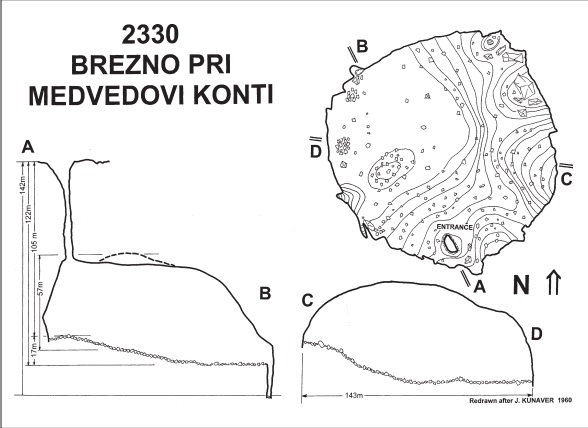Modelling the Stability of a Very Large Cave Chamber; Case Study: Brezno pri Medvedovi konti
DOI:
https://doi.org/10.3986/ac.v29i2.455Abstract
Dvorana v Breznu pri Medvedovi konti (Pokljuka) je s svojim razponom okrog 150 m, višino prek 50 m in prostornino 62,0 × 104 m3 druga največja znana v Sloveniji. S pomočjo računalniškega programa FLAC smo modelirali stabilnost oboka pri hipotetičnem denudacijskem tanjšanju stropa. Uporabili smo dva nabora mehanskih parametrov kamnine. V obeh primerih so deformacije v stropu najmanjše pri debelini stropa 20 m do 30 m, do zrušenja pa pride pri debelini okrog 4 m. To dobro ustreza terenskim opazovanjem delno zrušenih jamskih dvoran. Skladanje z realnostjo nas opogumlja k nadalnjim simulacijam.
The big chamber in Brezno pri Medvedovi konti (Julian Alps, Slovenia), about 150 m wide, over 50 m high and with a volume of about 62 x 104 m3, is the second largest cave chamber yet discovered in Slovenia. Application of FLAC computer software enabled modelling of the stability of the chamber’s arched roof during hypothetical denudational lowering of the overlying surface. Modelling was based on two sets of rock property parameters generally attributed to the local parent rock. In both cases the modelled deformation within the arch was at a minimum at a residual ceiling thickness of 20 to 30 m, whereas collapse occurred when the residual ceiling thickness reduced to about 4 m. These modelling results fit well with field observations of partly collapsed cave chambers.
Downloads

Downloads
Published
How to Cite
Issue
Section
License
Authors guarantee that the work is their own original creation and does not infringe any statutory or common-law copyright or any proprietary right of any third party. In case of claims by third parties, authors commit their self to defend the interests of the publisher, and shall cover any potential costs.
More in: Submission chapter




